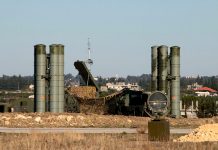
On April 16, 2025, Bharat Shakti, an Indian defense portal, reported that the Indian Air Force (IAF) is set to acquire 40 additional Rafale fighter jets from France under a government-to-government agreement, increasing its fleet to 76 units. This move, once finalized, represents a significant enhancement of India’s air combat capabilities in the face of growing tensions with neighboring China and Pakistan.
This acquisition is a key component of India’s strategy to modernize its air force swiftly, prioritizing speed and reliability over a protracted bidding process. It comes after high-level discussions between Indian and French officials, driven by the need to address the rapidly evolving security environment in the region. The decision aligns with India’s broader aim to counterbalance China’s growing military presence in the Indo-Pacific while navigating a competitive global fighter jet market.
India’s push for additional Rafales follows heightened regional instability, notably the 2020 border skirmishes with China in Ladakh, which revealed weaknesses in India’s preparedness, particularly in high-altitude operations. Similarly, Pakistan’s acquisition of the Chinese J-10C fighter jet has raised concerns about the potential for a two-front conflict. The deal, which emphasizes guaranteed delivery and continuity, is seen as a strategic necessity, addressing these concerns more efficiently than the Multi-Role Fighter Aircraft (MRFA) program, which would involve a lengthy competitive selection process.
The Rafale, manufactured by Dassault Aviation, is a versatile multi-role fighter jet known for its superior performance in air superiority, ground attack, reconnaissance, and nuclear deterrence missions. It is powered by two M88 turbofan engines, capable of reaching speeds up to Mach 1.8, and boasts an impressive combat range of 1,150 miles. The aircraft’s advanced radar and electronic warfare systems, along with its arsenal of long-range weapons like the Meteor missile, make it a formidable platform for India’s diverse operational needs, from high-altitude engagements to coastal defense.
India’s current fleet includes 36 Rafales, delivered between 2019 and 2022 under a €7.87 billion contract, stationed at Ambala and Hasimara Air Force Stations. The addition of 40 more Rafales would help bridge the gap in India’s fighter squadron strength, which currently stands at 31 of the planned 42. This shortfall is exacerbated by the retirement of older MiG-21s and delays in the production of the domestic HAL Tejas.
The Rafale’s capabilities, particularly in beyond-visual-range combat, offer a distinct advantage over platforms used by India’s adversaries. China’s J-20, though stealthier, faces issues with engine reliability, while Pakistan’s J-10C, despite being a capable fighter, lacks the comprehensive multi-role versatility of the Rafale. The Rafale’s operational track record, including combat success in Libya and Syria, further underscores its edge.
India’s choice to bypass the MRFA’s competitive tender process in favor of a government-to-government deal has sparked debate domestically. The MRFA program was initially designed to procure 114 aircraft through open bidding, with contenders including the American F-21 (a variant of the F-16) and Boeing’s F/A-18 Super Hornet. By opting for the Rafale, India capitalizes on the established logistics and training infrastructure for its existing fleet, including the newly approved Rafale-M variants for the Indian Navy.
However, this strategy raises concerns about India’s dependence on foreign suppliers, particularly as the country pursues its “Make in India” initiative. The financial implications of the deal are considerable, with estimates suggesting the cost of 40 additional Rafales could exceed $10 billion, a significant expenditure amid India’s ongoing defense modernization efforts.
France has emerged as India’s second-largest arms supplier, and the Rafale deal is a testament to the deepening defense-industrial cooperation between the two nations. The partnership is part of a broader strategic vision outlined during Prime Minister Narendra Modi’s visit to Paris in 2023, which emphasizes collaboration in defense technology and manufacturing. Dassault has also established a joint venture in India, Dassault Reliance Aerospace Limited, further aligning with India’s push for local defense manufacturing.
The regional implications of this deal are profound. China’s increasing presence in the Indian Ocean and its expanding air force capabilities have driven India to bolster its deterrence posture. The Rafale’s high-altitude performance is crucial for India’s strategic objectives in the Himalayan region, while Pakistan is likely to deepen defense ties with China in response, potentially accelerating the deployment of J-10Cs or seeking additional advanced platforms.
This acquisition also has broader implications for the Indo-Pacific, with other nations such as Indonesia and Malaysia observing India’s commitment to the Rafale as a potential shift in regional defense preferences, away from American or Russian-made aircraft.
In the context of global competition, the Rafale’s success in India highlights Dassault’s growing position in the fighter jet market, challenging American and Russian manufacturers. The F-35 remains out of reach for India due to cost and technology transfer constraints, and despite the capabilities of platforms like the F-21 and the F/A-18 Super Hornet, the Rafale’s operational synergy with India’s existing fleet gives it a competitive advantage.
India’s air force has historically relied on a mix of foreign and domestic platforms, with French Mirage 2000s playing a crucial role in the 1999 Kargil conflict. The Rafale, with its advanced features and smooth integration into the Indian Air Force, is poised to continue this legacy, addressing the modern security challenges India faces.
The decision to acquire additional Rafales, while providing immediate reinforcement, also underscores the challenges India faces in achieving full defense self-reliance. The Tejas program, though promising, has not yet met the Air Force’s demands, and the proposed deal with France highlights the ongoing balancing act between immediate capability requirements and long-term aspirations for indigenous defense production.
As India moves forward, the Rafale will continue to shape its defense posture, regional influence, and strategic partnerships. The finalization of this deal, if successfully executed, will provide a significant boost to India’s air power, but its long-term implications on defense strategy, particularly regarding self-sufficiency, remain to be seen.




